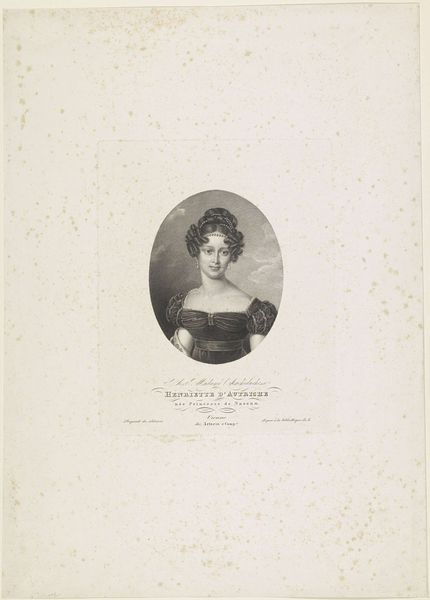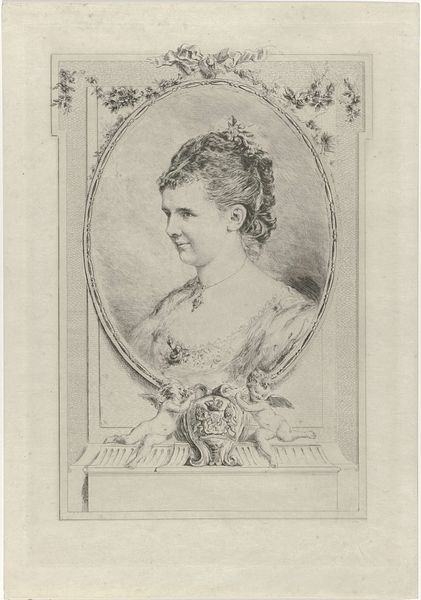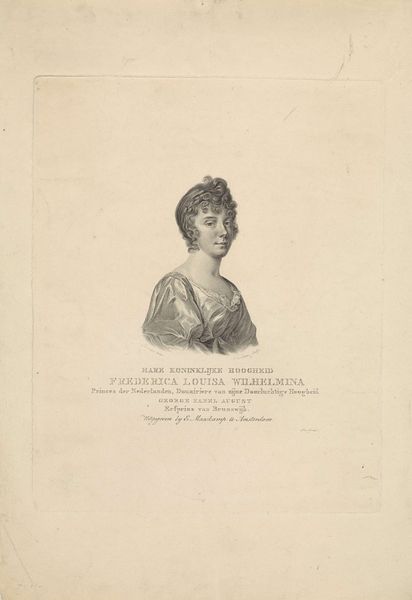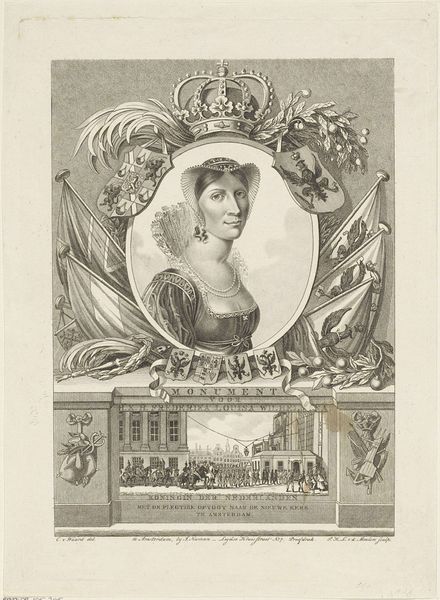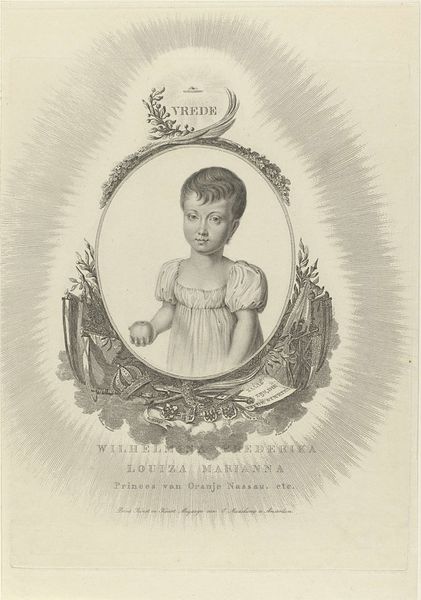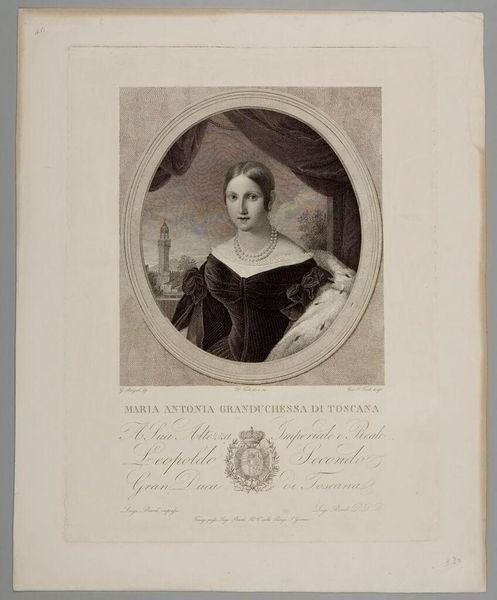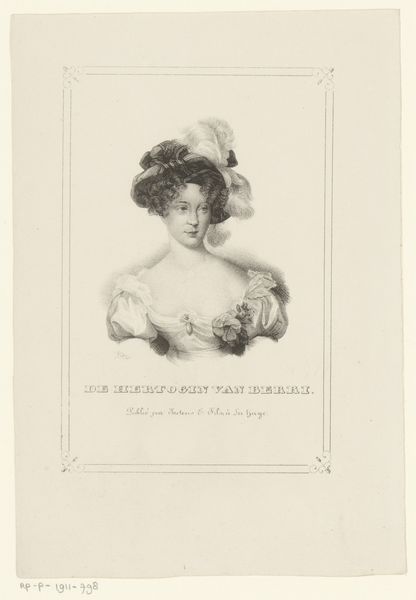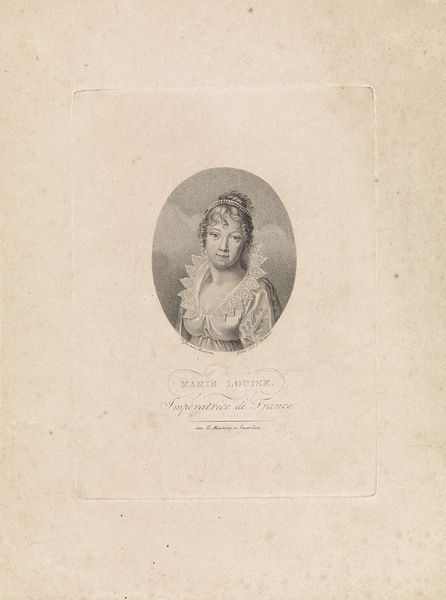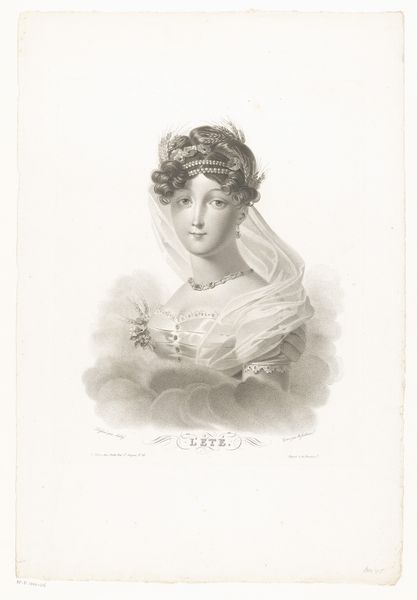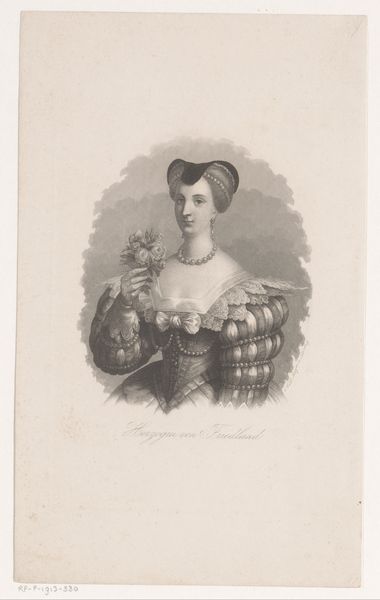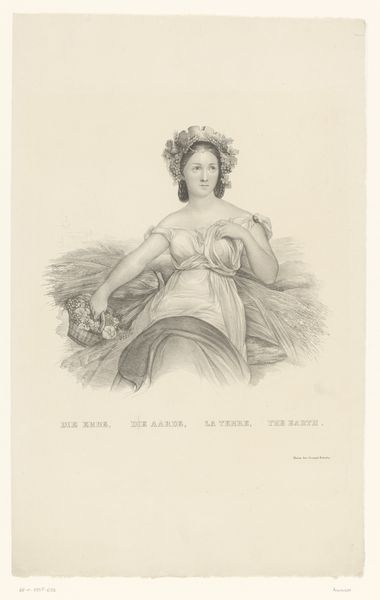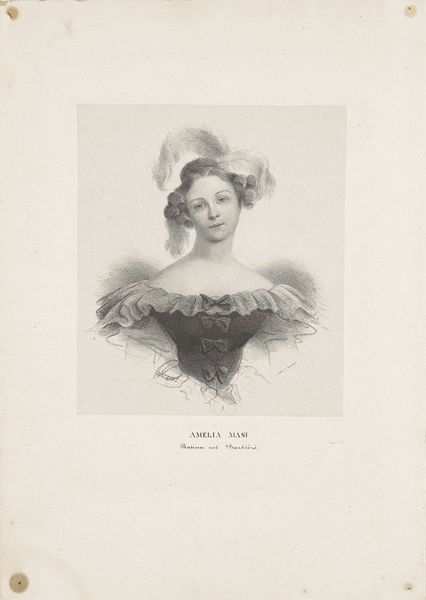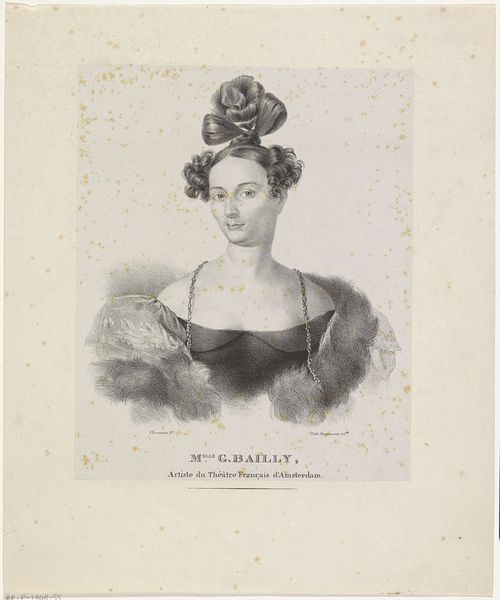
Portret van Wilhelmina Frederica Louisa (koningin der Nederlanden) 1815 - 1851
0:00
0:00
print, engraving
#
portrait
#
pencil drawn
# print
#
pencil drawing
#
history-painting
#
engraving
Dimensions: height 348 mm, width 242 mm, height 337 mm, width 312 mm
Copyright: Rijks Museum: Open Domain
Curator: Here we have Willem van Senus’s engraving of Wilhelmina Frederica Louisa, Queen of the Netherlands, likely made sometime between 1815 and 1851, a period that aligns with her reign. Editor: It strikes me as rather formal, as royal portraits tend to be. The radial lines emanating from behind the frame give it a somewhat ethereal quality. It's an interesting choice given that it's just a print. Curator: The formal aspects are compelling. Note the careful balance achieved with the circular frame, the detail in the Queen's dress, contrasted by the radial bursts in the background. These lines create visual tension, don't you think? Editor: Definitely. And it makes one wonder about the context of its creation. Was this a widely distributed image intended to project a specific image of the queen? Curator: Given the time frame, and that the piece is rendered as a print, I believe the intention was most likely wide circulation to reinforce her image among the populace. Royal portraiture often functions as a tool for projecting power and legitimacy. It is very controlled imagery. Editor: That 'controlled imagery' really raises the question, doesn’t it, of accessibility and control within visual representation? The choice of engraving – a relatively reproducible medium – seems designed for a particular viewership and to perpetuate a defined version of royal authority. It speaks to the social and political function art had at the time. Curator: Indeed. And the engraving is executed in such a way that the formal constraints are subtle, yet firm. Notice how the curves and lines keep directing the gaze back towards the center, back towards her. The semiotics reinforce monarchy’s emphasis on stability and central authority. Editor: Reflecting on this piece, I see a clever intersection of art and authority— the work underscores how prints became tools in sculpting public sentiment towards figures like Queen Wilhelmina. Curator: And I observe a fascinating study of technique and construction coming together to represent a specific image of power, using form to influence public perception of a historical figure.
Comments
No comments
Be the first to comment and join the conversation on the ultimate creative platform.
